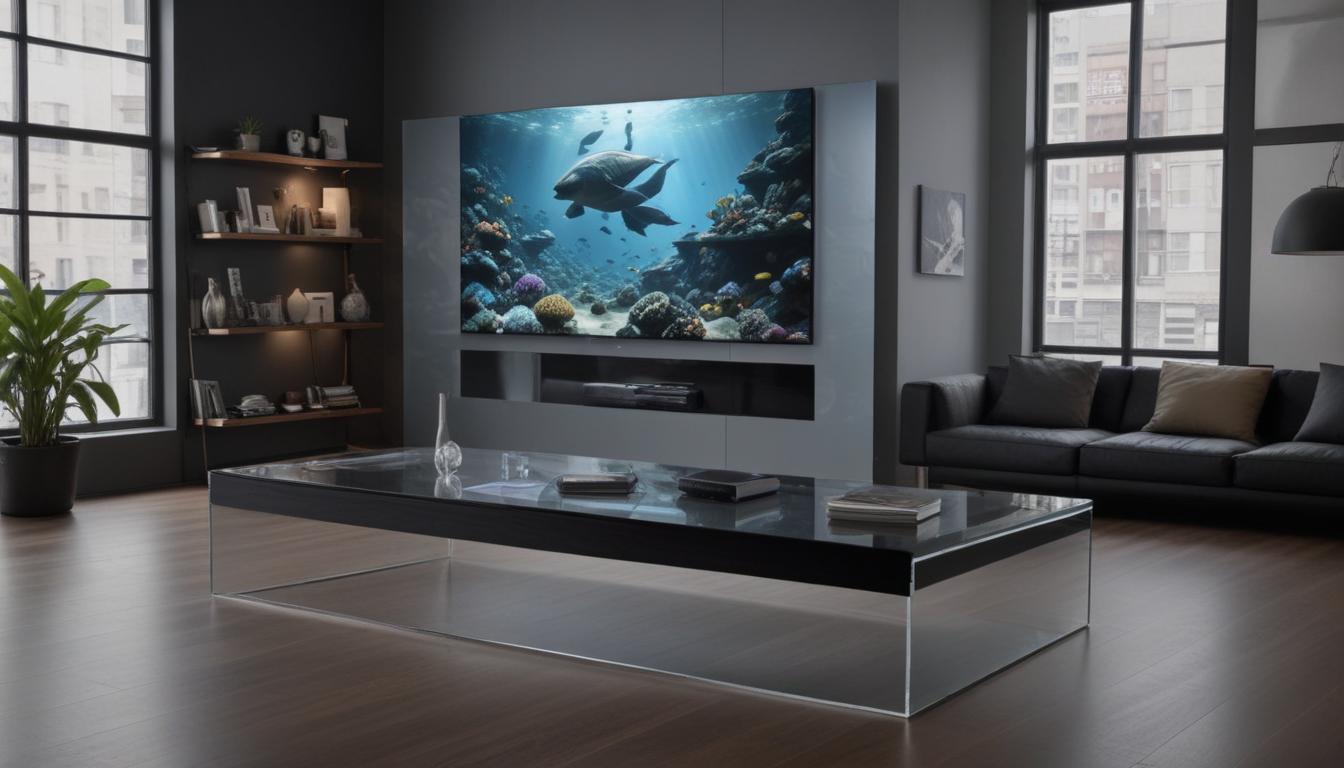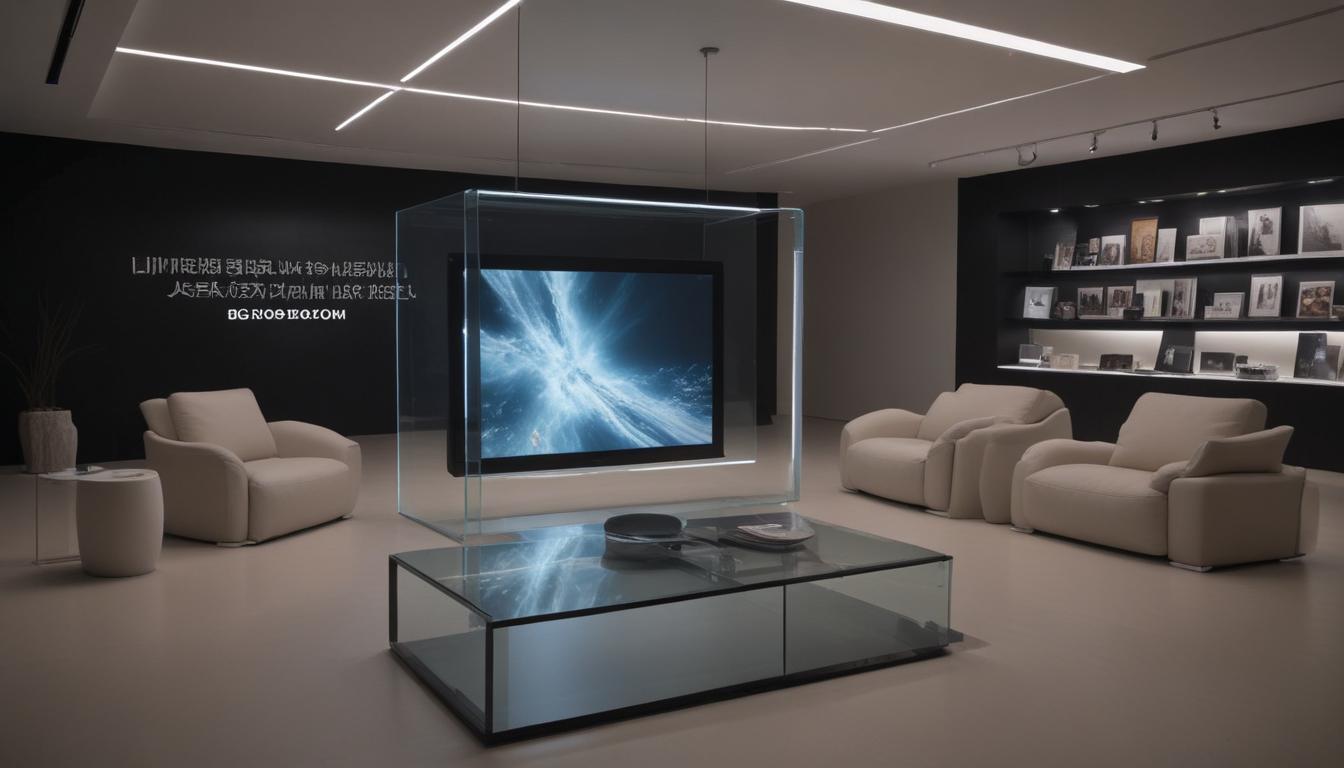Now Reading: See-Through Screens The Future is Clear
- 01
See-Through Screens The Future is Clear
See-Through Screens The Future is Clear

Transparent Displays The Future of Screens is Clear
Have you ever looked at the sleek design of your living room or the carefully curated layout of a retail store and felt that something was out of place? That big, black rectangle—the television or digital sign—often feels like a void, a dark block that dominates the space when turned off. It disrupts the flow, hides what’s behind it, and creates a hard line between our physical world and our digital one. What if that barrier could dissolve? What if your information could float in mid-air, integrated seamlessly into your environment?
This isn’t a scene from a futuristic movie anymore. The solution is here, and it’s called transparent display technology. These revolutionary see-through screens are changing how we interact with digital content by overlaying it directly onto our view of the real world. They are transforming windows, display cases, and everyday surfaces into dynamic, interactive canvases. This technology is finally moving from the lab to our lives, offering a glimpse into a future where our digital and physical worlds merge in stunning clarity.
What Are Transparent Displays and How Do They Work
At its core, a transparent display is a screen that has the ability to show images, videos, and text while remaining see-through. Unlike conventional screens that use an opaque backlight to illuminate their pixels, transparent screens are designed to allow light to pass through them from behind. This creates the magical effect of content appearing to hover in space, without completely obscuring the view of whatever lies beyond the screen. This technology fundamentally redefines what a screen can be, turning it from a solid object into an interactive window.
The innovation behind this effect primarily comes from two leading technologies. By understanding how they function, we can appreciate the unique benefits each brings to different applications. The choice between them often depends on the desired level of transparency, color vibrancy, and the environment in which the screen will be used. Both are pushing the boundaries of what’s possible, making our spaces smarter and more visually engaging.
The Magic Behind the Glass
The most advanced and visually striking technology is Transparent OLED (TOLED). OLED screens are “self-emissive,” meaning each individual pixel generates its own light. There is no need for a bulky, opaque backlight layer. When a pixel is instructed to be black, it simply turns off, becoming completely transparent. This allows for incredibly high transparency levels and stunning contrast, as the bright, vibrant colors of the active pixels stand out sharply against the clear background. This is the technology that delivers that true “floating image” effect seen in high-end applications.
On the other hand, we have Transparent LCD (TLCD) screens. A traditional LCD screen works by blocking light from a backlight to create an image. A transparent version cleverly removes the backlight and instead relies on ambient light from the surrounding environment to illuminate its pixels. While this makes them a more power-efficient and often cost-effective solution for large-scale installations like commercial freezers or architectural glass, their performance can depend on the lighting conditions. They typically offer lower transparency and less vibrant colors compared to their OLED counterparts, but they remain a powerful tool for specific use cases.

Where We See Transparent Displays in Action Today
While it might seem like a technology reserved for science fiction, transparent displays are already making a significant impact in a variety of industries. Their unique ability to merge digital information with physical products or environments creates an unparalleled user experience that is both informative and captivating. From luxury retail stores to innovative public transport systems, see-through screens are being deployed to capture attention, provide context, and deliver information in a way that feels natural and unobtrusive.
These applications go far beyond simple novelty. They solve real-world problems by enhancing communication and engagement. In a world saturated with digital noise, the ability to present information without creating a physical barrier is a powerful advantage. This is why businesses and designers are increasingly turning to transparent displays to create memorable and effective interactions that leave a lasting impression on consumers, commuters, and visitors alike.
Transforming Retail and Public Spaces
The world of retail has been one of an early and enthusiastic adopter. Imagine a high-end jewelry store where the glass display case itself comes to life. As you look at a diamond ring, the transparent screen overlays its specifications, tells its origin story through a video, and shows it being worn, all while you never lose sight of the actual product. This creates an immersive and persuasive shopping experience that a simple placard could never achieve. This same concept is being used in museums to overlay historical context onto ancient artifacts and in trade shows to create show-stopping product demonstrations.
Beyond retail, public spaces are becoming smarter. You might soon see train windows that display the route map and upcoming stops directly on the glass, allowing you to see the information and the passing scenery simultaneously. Airports could use transparent partitions to display flight information, directing travelers without adding to the visual clutter of hanging signs. These applications enhance our environments by making information accessible right where we need it, integrated seamlessly into the architecture around us.
Innovations in Mobility and Homes
The automotive industry is another frontier for transparent technology. Many modern cars already feature Heads-Up Displays (HUDs), which project basic information like speed and navigation onto a small section of the windshield. The next evolution will see entire windshields and side windows becoming smart, interactive surfaces. They could highlight points of interest as you drive, display safety warnings about upcoming hazards, or even provide augmented reality navigation that paints the correct turn directly onto the road ahead.
This innovation is also entering our homes. Picture a kitchen where the glass door of a cabinet can display recipes, your family’s calendar, or a news feed. Consider a “smart window” that shows you the weather forecast and your morning schedule before you even open the blinds. When not in use, it’s just a normal window. This technology promises to declutter our living spaces, removing the need for separate screens and embedding digital convenience directly into the fabric of our homes.


































